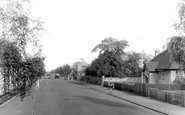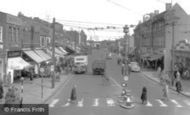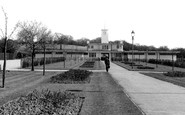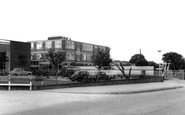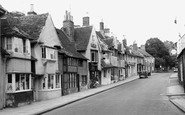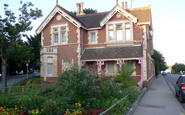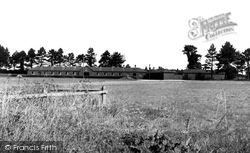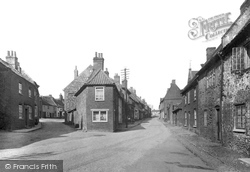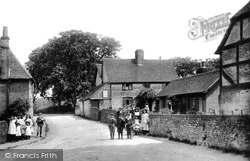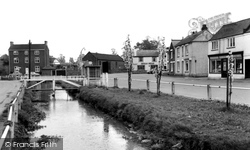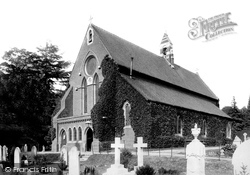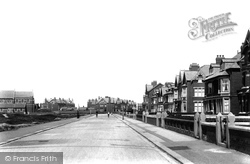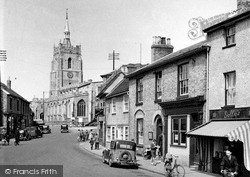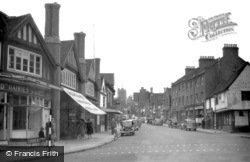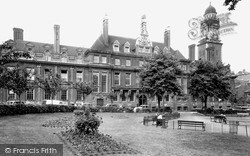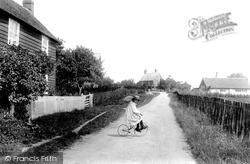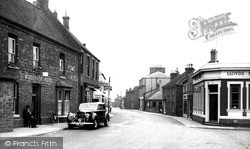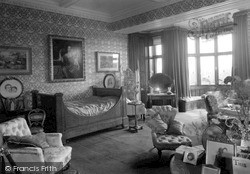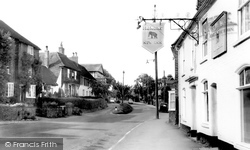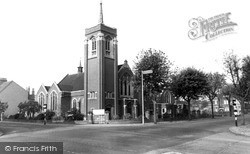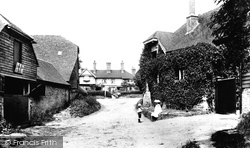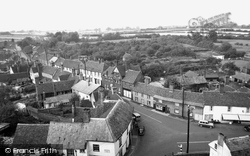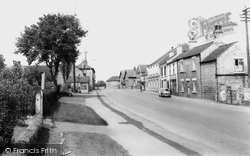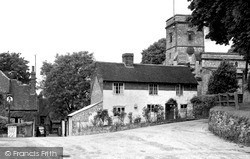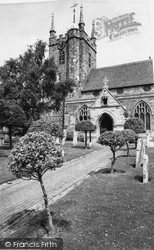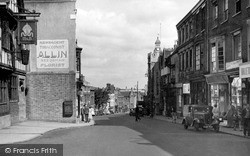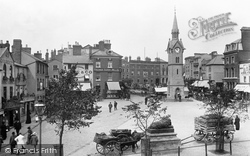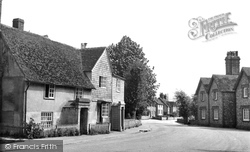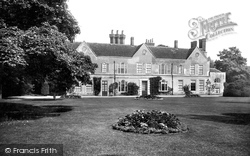Places
Sorry, no places were found that related to your search.
Photos
Sorry, no photos were found that related to your search.
Maps
Sorry, no maps were found that related to your search.
Books
Sorry, no books were found that related to your search.
Memories
655 memories found. Showing results 131 to 140.
Newmarket Hospital
I worked in racing stables in Exeter Road. In the spring of 1960 I was injured when a yearling I was exercising suddenly reared and I 'went out the back door', narrowly missing the edge of the pavement, but hitting my unprotected ...Read more
A memory of Newmarket in 1960 by
Downshall Secondary School
I have very fond memories of Downshall Secondary where I was between 1958 and 1962. I used to live in Downshall Avenue, and we used to walk everywhere, to school, to Seven Kings Park and the park up Meads Lane. We ...Read more
A memory of Seven Kings in 1960 by
East Anglian Marshland Memories
I sat and talked with a man of God, about people and places we have known and loved. As part of my life being spent on the Marsh, formative years that were oft-times harsh. Such happy memories tumbled back to ...Read more
A memory of Holbeach St Marks in 1960 by
Wrotham Road
Yes, I used to go to Wrotham Road for rock & roll, they were the early days from 1960 to 1963 and it was the meeting place for the lads. I remember taking a break from dancing and going into the Lord Kitchener pub Friday night when ...Read more
A memory of Welling in 1960 by
Larkswood Swimming Pool
I remember using the Larkswood swimming pool in all weathers, even having to break the ice. I also remember the horrible changing rooms and sitting for hours on the hills - sometimes never bothering to swim. You could ...Read more
A memory of South Harefield in 1960 by
Bell Ringing
The is the church I was baptised in. As I child I used to go bell ringing here (St James the Less). We used to climb up the very narrow stairwell being very careful not to slip. Every week we used to practise. There were six bells and I ...Read more
A memory of Dorney in 1960 by
First Day
I remember as a very nervous 11 year old walking through the doors of this brand new school, as the first of the 1st year. No playground, so every break was spent in the classroom or in the hall, which doubled as the gym. Watched over the 5 ...Read more
A memory of Hockley in 1960 by
The Barber Shop
This photo was taken around 1960 as my father (who can be seen in the photo, cleaning the bedroom window) bought number 11, St Paul's Street in 1958 and did not open the barber shop for over a year. I was 5 years old when we moved in ...Read more
A memory of Stamford in 1960 by
Opposite The Grammar School
I attended Poole Grammar from 1956-64, and saw your house almost daily. The school then was almost opposite the house, it was torn down when the Seldown Bridge was built. The school was very overcrowded so we used the park in our lunch break.
A memory of Poole in 1960 by
Old Buckhaven Memories
Hello, I was born in Cairns square Buckhaven in 1949, sadly demolished in the early 60's I think. My gran lived there - I was born in her house before she moved to Bayview overlooking the bay and Mc Duff castle in the ...Read more
A memory of Buckhaven in 1960 by
Captions
405 captions found. Showing results 313 to 336.
IN 1908, in his Round About Wiltshire, A G Bradley wrote an idyllic description of the five mile 'run' between Beckhampton and Calne: 'One is on the wide open down, traversing the north-western
The long straight high street eventually opens up into the Friday market place.
Fifteen children have been neatly assembled by the photographer in front of the brick and half-timbered cottages that comprised this small village – it was originally called Clandon Abbots.
The brook here somehow appears to be little cared for, with its chipped concrete posts arrayed along weedy banks.
This modest building of red brick is attributed to T H Rushworth and was built in about 1864. The windows are 13th-century and show a variety of designs in two-bay arcades.
The buildings were all good quality brick with stone cappings and gate posts.
The roundabout was removed in 1979 to make way for a new road junction.
On the right, the Royal Oak, the shop with the arched door and window, and the building nearest the camera, here Dolly's sweet shop, all remain.
This photograph was taken from the junction of the High Street with Bridge Street. The dominant buildings are of the early 1900s, complete with a fine set of chimney stacks.
The early 19th century saw Leicester in an appalling sanitary condition, until piped water came to the town in the mid 1850s, along with its first sewers.
Lying just to the north of Chilham is this small and curiously named hamlet where, until the beginning of the 20th century, an annual race was staged between two village youths and two maidens for a
North from the Market Place, the High Street curves away past The Woolpack, now rendered and roughcast.
This plainer room is one occupied by Queen Victoria when she stayed at Thoresby, enjoying the lavish hospitality of Earl Manvers.
The pretty village of Elham, at the heart of the valley of that name, is clustered around its market square and this High Street, lined with buildings from several periods.
Churches were built to serve the suburbs north of Abington Park.
The pretty village of Shackleford, west of Godalming, has a mixture of houses in different styles, as evidenced here by the creeper-clad building on the right, the tall-chimneyed cottages with their neatly
Bridge House, the Post Office Stores and the adjoining houses (centre bottom) follow the curve of the street, named after The Swan Inn.
Two miles south of Langold, Carlton in Lindrick is a village of two parts, the original village to the south and a large former colliery village with hard red brick semi-detached houses.
Oving, west of Whitchurch, lies off the main road, and is a very pretty village on the Portland limestone ridge.
Another view, similar to H6031 (above), shows the brick-paved path and the holly bushes. At the left is a silver birch, which also survives today.
The contraption on the brick wall of Allin's Newsagents beside the pub is a vending machine.
Beyond the Clocktower, the Georgian brick front belongs to the George Inn, which was replaced by Burtons in 1936.
Glynde is most famous for its internationaly renowned opera house built in the grounds of Glyndbourne.
West of the church and across a stream is The Bury, the manor house until 1741. At one time council offices, it is now divided into houses and its grounds are a public open space.
Places (0)
Photos (0)
Memories (655)
Books (0)
Maps (0)



